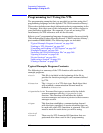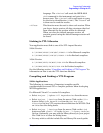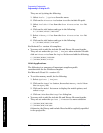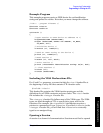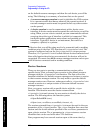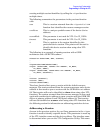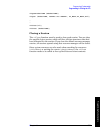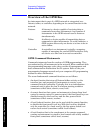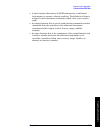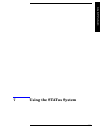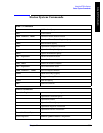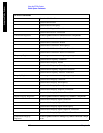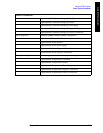
554 Chapter6
Programming Fundamentals
Overview of the GPIB Bus
Programming Fundamentals
Overview of the GPIB Bus
An instrument that is part of a GPIB network is categorized as a
listener, talker, or controller, depending on its current function in the
network.
Listener A listener is a device capable of receiving data or
commands from other instruments. Any number of
instruments in the GPIB network can be listeners
simultaneously.
Talker A talker is a device capable of transmitting data or
commands to other instruments. To avoid confusion, a
GPIB system allows only one device at a time to be an
active talker.
Controller A controller is an instrument, typically a computer,
capable of managing the various GPIB activities. Only
one device at a time can be an active controller.
GPIB Command Statements
Command statements form the nucleus of GPIB programming. They
are understood by all instruments in the network. When combined with
the programming language codes, they provide all management and
data communication instructions for the system. Refer to the your
programming language manual and your computers I/O programming
manual for more information.
The seven fundamental command functions are as follows:
• An abort function that stops all listener/talker activity on the
interface bus, and prepares all instruments to receive a new
command from the controller. Typically, this is an initialization
command used to place the bus in a known starting condition
(sometimes called: abort, abortio, reset, halt).
• A remote function that causes an instrument to change from local
control to remote control. In remote control, the front panel keys are
disabled except for the Local key and the line power switch
(sometimes called: remote, resume).
• A local lockout function, that can be used with the remote function,
to disable the front panel Local key. With the Local key disabled,
only the controller (or a hard reset by the line power switch) can
restore local control (sometimes called: local lockout).
• A local function that is the complement to the remote command,
causing an instrument to return to local control with a fully enabled
front panel (sometimes called: local, resume).



